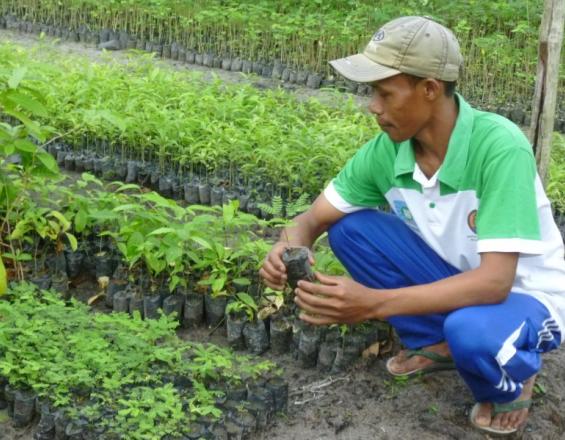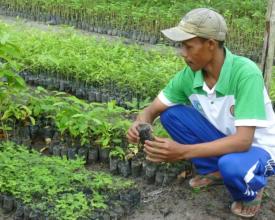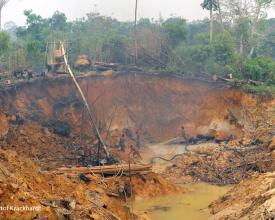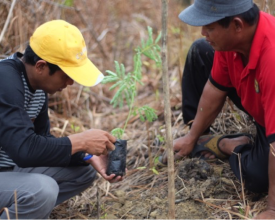
Large-scale Forest Landscape Restoration (FLR) with Native Tree Species and Agroforestry Systems

Large parts of the rainforests in Borneo (Kalimantan) have been cleared or are degraded. The degraded areas are subject to erosion, offer little in terms of Ecosystem Services and provide no income to the locals. A solution is Forest Landscape Restoration with native tree species and agroforestry systems, starting with fast-growing, commerically viable pioneer species that stabilize and improve the soil with nitrogen fixing. In a second step, agricultural plants and tree species with longer rotation are added. Organic fertilizers such as compost contribute to the restoration of soil fertility.
Impacts
The solution utilizes the transformation of the Indonesian wood sector, that saw a shift of focus from hardwood cut in natural forests towards fastgrowing lightwood species that are able to grow on poor soils. Pioneer species such as Paraserianthes Falcataria improve fertility with nitrogen fixing and enhance erosion control. Once these initial rehabilitory effects take hold, additional plants – both food and cash crops – can be intercropped and other tree species can be planted. Thus, the areas in question are once more able to provide ecosystem services such as water catchment and serve as a biodiversity corridor. In addition, the growing trees absorbe carbon from the athmosphere and increase the soil carbon stock. Last but not least, the communities and farmers participating in the solution create a sustainable source of income through the fast-rotating lightwood trees, hardwoods with longer rotations and cash crops, and are able to utilize formerly degraded areas for food production. The FLR areas also reduce pressure on primary forests, since the communities are no longer depended on its exploitation for building materials, food and income. Alongside the activities taking place on degraded areas, involved communities set aside parts of primary or biodiversity-rich secondary forest for conservation and regeneration, thus contributing to FLR on a landscape scale.




